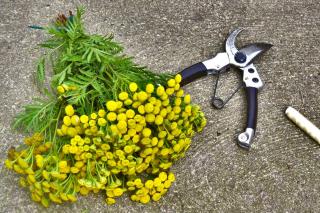

Fermented tea, maceration, infusion, decoction… garden tansy sure shares many benefits! Pest repellent and fungicide, it’s also an interesting flower that fosters biodiversity.
Read also:
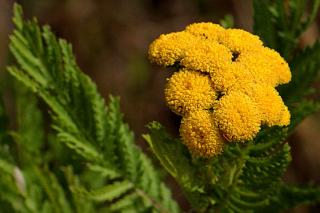
Flies, slugs, codling moth, ants and aphids hate it.
On the other hand, wasps and predator wasps, ladybugs and hoverflies love it for the pollen and nourishment it offers. It is even noted to inhibit the laying of eggs and feeding of larvae for some insect species that typically cause heavy damage in the vegetable patch, such as the colorado potato beetle and the cabbage moth.
Fermenting will extract nutrients and active compounds best, but the other methods are faster and easier to prepare. Pair it with
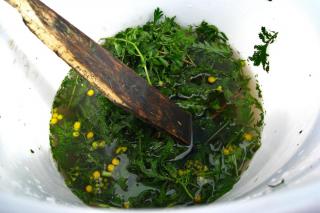
Pour your fermented tea in bottles and store these away from light. Take note that, as such, the mix is concentrated: you have to thin it to a 5 or 10% mix before spraying (1 volume mix plus 9 or 19 volumes water). This spray is excellent when used as a preventive treatment to repel vegetable patch pests and keep rust and mildew from appearing.
→ Use or prepare this together with nettle fertilizer to hit two birds with one stone!
Boil a quart or liter of rainwater, and chop up about 10 ounces (300g) of tansy. Use the whole plant: stem, roots, leaves, flowers (if any). Place the tansy in a non-metal bowl or container and cover with the boiling water. Cover it over and let it steep an entire day. Filter your infusion and transfer it to a bottle for storage and keeping. Dilute it 1:9 (10%) before use. Excellent to repel ants, owlet moths, flies and sawflies.
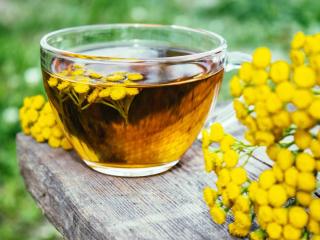
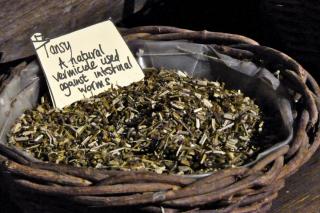 An infusion will alleviate the pain in painful menstruation, ease digestion, and for animals serves as a vermifuge.
An infusion will alleviate the pain in painful menstruation, ease digestion, and for animals serves as a vermifuge.Follow recommended doses for each particular use: since tansy contains thujone, a toxic compound, mistakes can be dangerous. When the dosage is small, tansy is beneficial. When doses are too high, or the plant is taken too often, it becomes toxic and even triggers miscarriages. Definitely not a plant extract for pregnant women!
Convinced yet? Wouldn’t it be a great idea to have a little tansy at hand? At the very least, pollinators will consider the camphor-scented blooming a real treat! It is a very easy plant to grow, as long as drainage is good. It’ll thrive in poor, and even limestone soil. It does prefer cool soil, and doesn’t really like excess acidity. Better place it in sun or part shade, either in containers or directly in the ground.
Planting is most successful in Spring and Fall, and spacing should be at least 30 inches (50 cm) between plants. If growing in a pot, layer the bottom of the pot with clay marbles for drainage. Outside in the ground, water only upon planting, and then again in case of prolonged dry spells.
